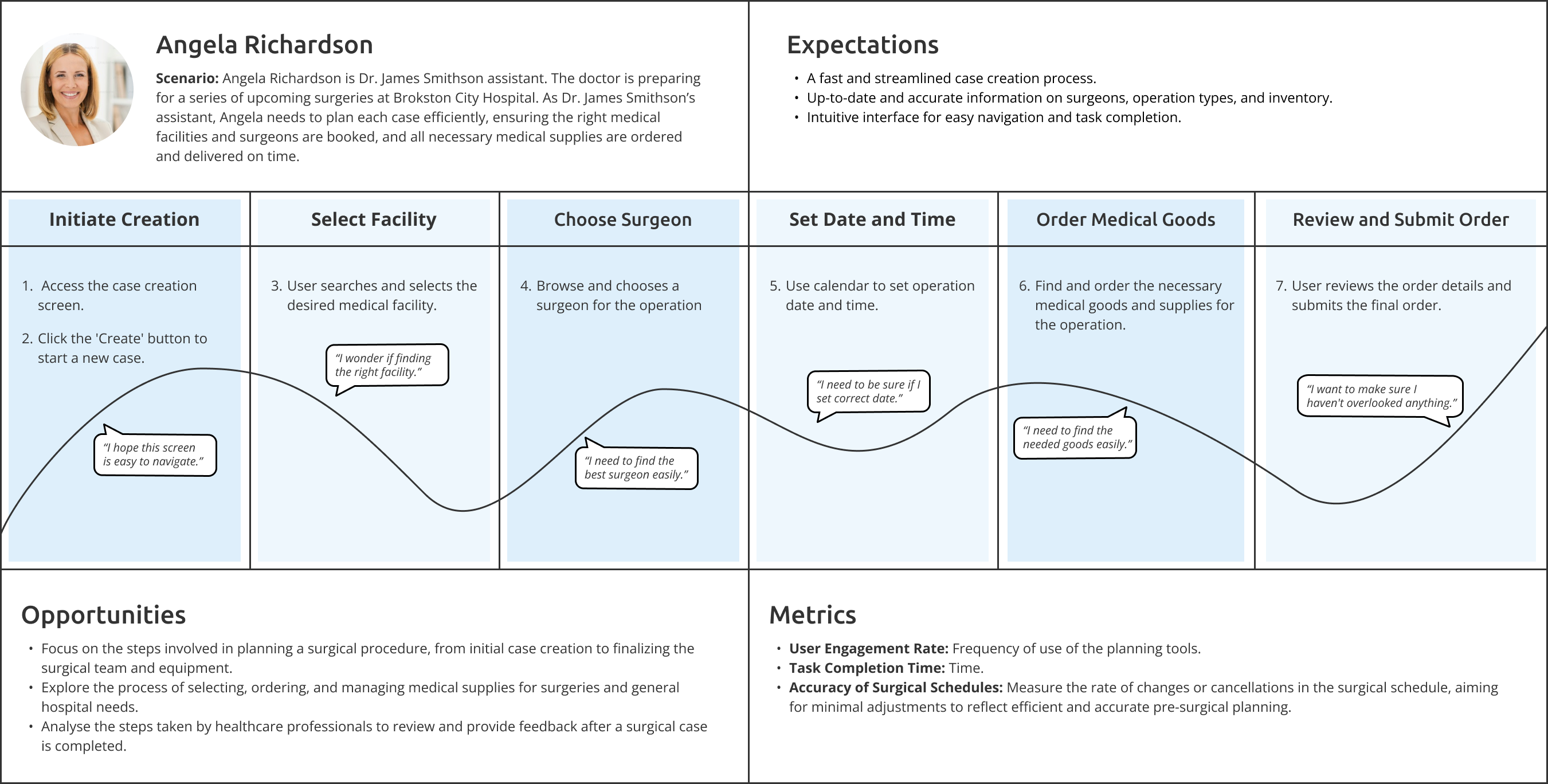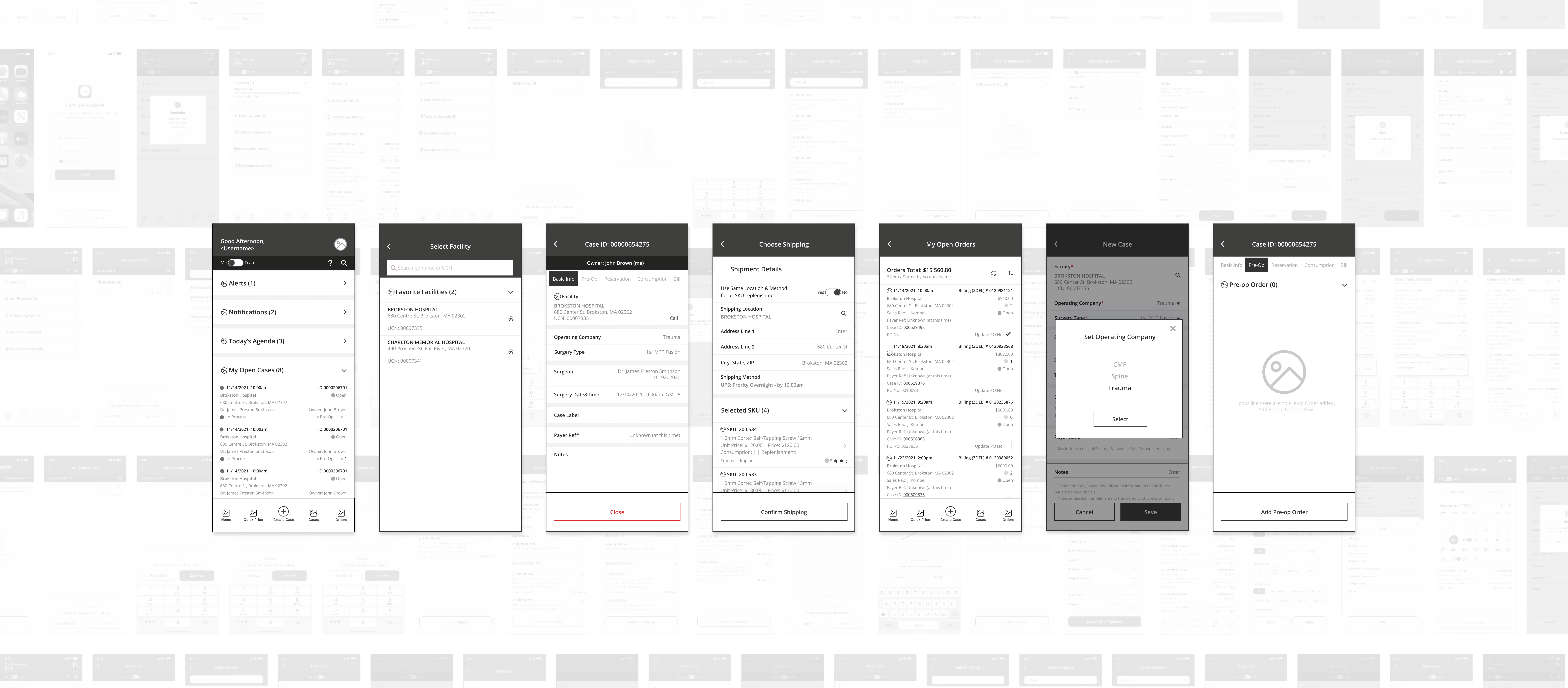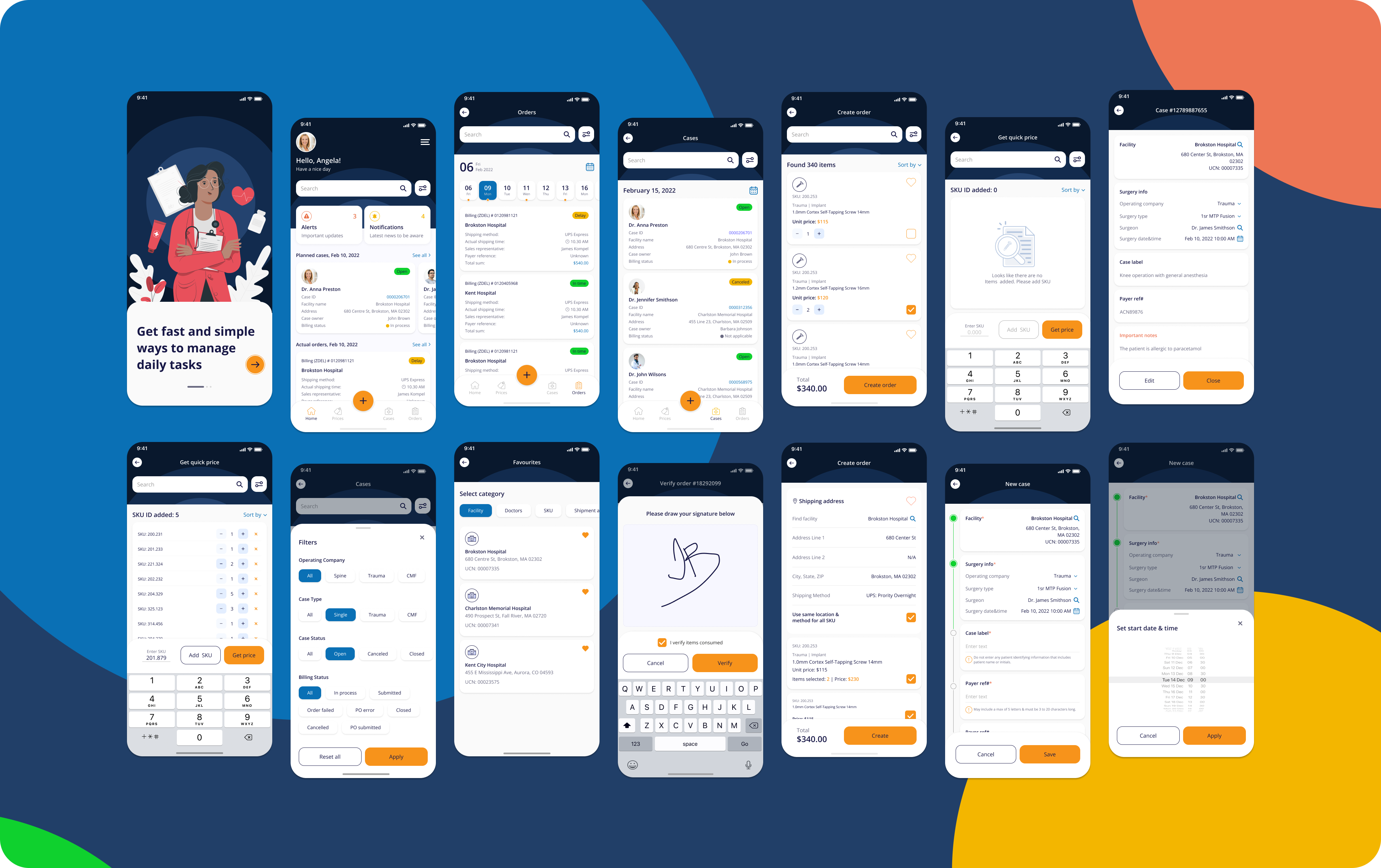Research & Discovery
Conducted stakeholder interviews and user research to uncover inefficiencies in procurement, scheduling, and medical order tracking. Identified key pain points affecting workflow efficiency.

Inventing a unified experience
Mapped fragmented processes across 3 apps into a single, streamlined platform. Designed user flows and low-fidelity wireframes to eliminate redundancy, improve navigation, and refine workflows.

Iterative prototyping & Testing
Developed interactive prototypes to simulate real-world usage. Conducted usability testing with healthcare professionals, analyzing feedback to refine interactions, enhance clarity, and improve task efficiency.
Implementation & Handoff
Delivered high-fidelity mockups and detailed design specifications for smooth developer handoff. Ensured alignment between design, business goals, and technical feasibility.
